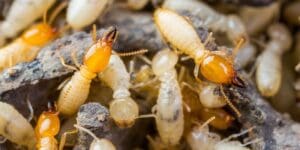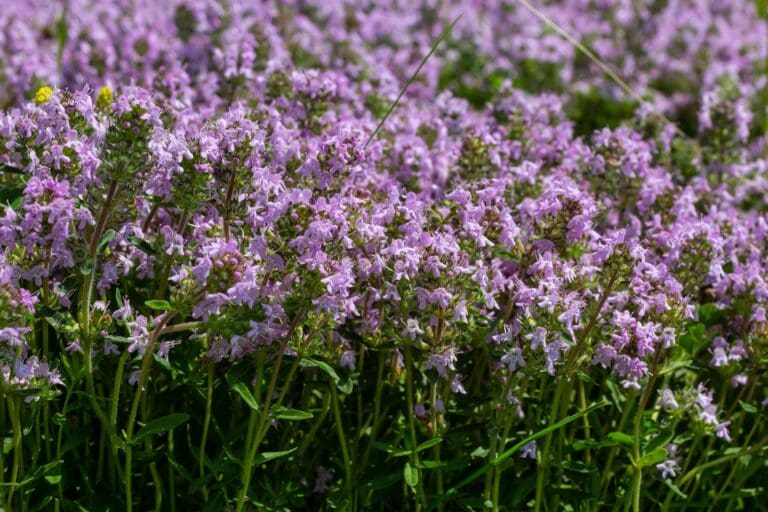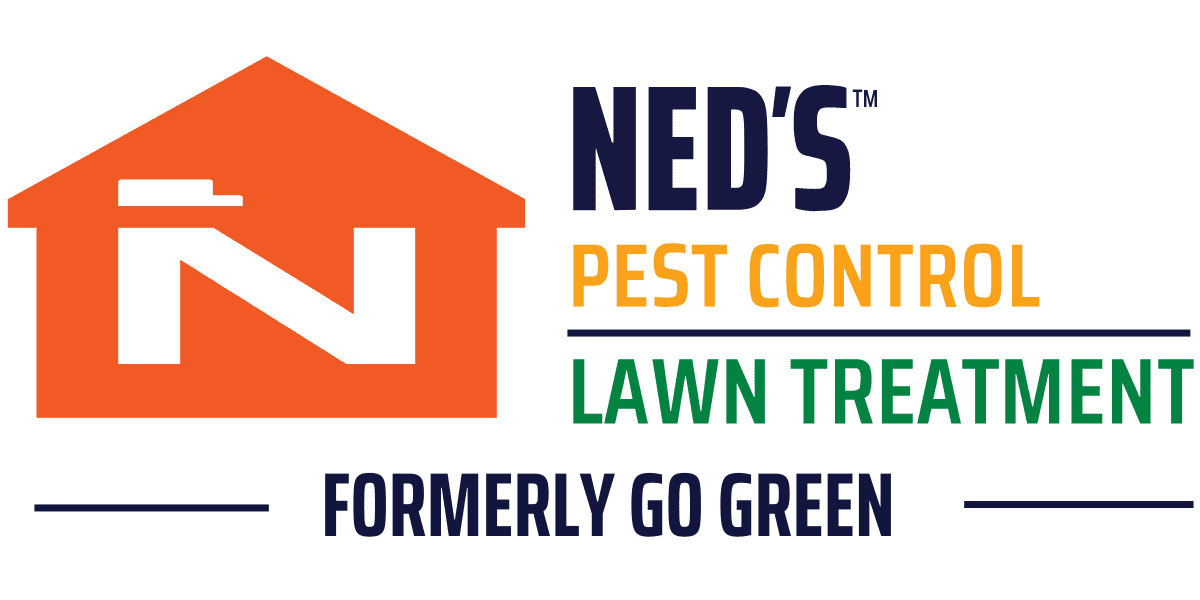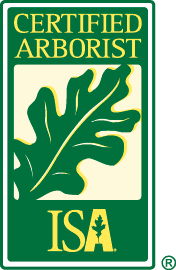Table of Contents
Termites are possibly the most famous home pest around, due in large part to their high propensity for causing extensive home damage. Responsible for over $5 billion worth of property damage every single year, it is useful for all homeowners to have an understanding of this threat and how to counter them. They are also an incredibly common pest, found all over the United States and Pennsylvania is no exception.
Types of Termites in Pennsylvania
While there are over 2,000 different species of termite around the world, thankfully here in Pennsylvania you will primarily be contending with only one species. The primary termite species here in PA is the eastern subterranean termite.
Eastern Subterranean Termite
The eastern subterranean termite is one of the more common global termites, and as its name suggests, prefers to inhabit damp soil because of its need for moisture. A colony of these termites can be anywhere from around 50,000 individuals all the way up to over 1 million. A termite colony will consist primarily of three different social groups, the workers, the soldiers, and the reproducers. Each of these groups looks slightly different and takes on different roles and responsibilities for the colony.
How to identify the Eastern Subterranean Termite
When attempting to identify a termite, you will likely be looking at either a worker or soldier that has left the colony.Both worker and soldier termites share some common characteristics, including:
- Being around ⅛ inch in length.
- Milky almost translucent body coloration.
- The soldiers will wield large pincers on their heads as a weapon.
- Small antennae, which helps to distinguish them from ants which have larger antennae.
Are there Drywood termites in Pennsylvania?
Another common species of termite you may have heard about are drywood termites, whose preferred habitat is inside woods or forests.Thankfully, there have been no known sightings or identification of drywood termites in Pennsylvania. Instead, drywood termites are native more to the south of the US and along the Gulf of Mexico, so you won’t have to contend with them.
When is Termite Season in Pennsylvania?
Termites are active year-round, especially if a colony has been established and they have begun feeding, so it is important to be vigilant all year round. That being said, there are times of the year when termites are more visible and their activity can be monitored. Between March and May, the eastern subterranean termite likes to swarm, meaning they grow wings and fly around in large groups, attempting to establish their own colonies.
While this is the primary swarming season, that is not to say that there may not be isolated termite swarms throughout the year. Indeed, there is a second, lesser swarming season that is understood to begin in the fall, lasting from roughly September through October.These two seasons are when you will be likely to see flying termites, but keep in mind thatif termites are in your home, they will be active all year round.
How to Protect Your Home From Termites
 Given how destructive termites are, the best chance that you have is to make sure that you prevent termites from getting into your home in the first place. First and foremost, termites are like any other pest in that they are seeking food and shelter, so making sure that your home offers neither of those things is the best way of preventing a termite colony from taking up residency. Some of the best methods of keeping termites away are as follows:
Given how destructive termites are, the best chance that you have is to make sure that you prevent termites from getting into your home in the first place. First and foremost, termites are like any other pest in that they are seeking food and shelter, so making sure that your home offers neither of those things is the best way of preventing a termite colony from taking up residency. Some of the best methods of keeping termites away are as follows:
- Get rid of wood near your home
- Prevent moisture in your foundation
- Reduce humidity in crawl spaces
- Look out for signs of an infestation
1. Get Rid of Wood Near Your Home
Addressing a termite’s food concern is a priority when attempting to keep termites away. Whilst your home may be full of wood, it won’t be the first thing that swarming termites will be able to reach. Dead, dying or rotting wood around your home will be like a guiding light to swarming termites that there is food available, and will allow termites to establish themselves before continuing their search. Wood near your home could eventually lead to termites making the jump into your own home.
2. Prevent Moisture
Eastern subterranean termites are especially attracted to moist or damp areas as they need that moisture to continue to survive. Any moisture in your home or foundations will be very attractive when termites are looking for a place to live. Ensure that there are no water leaks in the home, that the foundations have methods of keeping moisture out, and that your gutters are clear and don’t provide any opportunity for water build-up.
3. Reduce Humidity
Along the same lines, humidity creates the perfect environment in which termites can thrive. Dehumidifiers in less busy areas of the home, such as a garage or basement, can help to keep those areas from becoming the moist home a termite is seeking. Keeping good airflow throughout the home can also help to keep termites from being able to establish themselves.
4. Look Out For Signs of an Infestation
Maintaining vigilance in the swarming seasons and beyond is key to being able to catch any termite infestation in its infancy before they have a chance to cause real damage. Knowing the signs of a likely termite infestation should help you be able to notice it before the damage becomes too great. Some common signs of a termite infestation include:
- Sticking windows and doors – if windows and doors start to be difficult to open, it may be because their frames are being eaten by termites.
- Damage to paint or wallpaper – termites create needlepoint holes in the wall as they tunnel through it, and this can sometimes show itself in the walls or paint as bubbling or peeling, if the termites haven’t completely broken through.
- Warped door frames – If you start to notice damage or structural weaknesses in your door frames, it may be because the inside of the frames have been eaten away.
- Discarded wings – Following the swarming season, termites will lose their wings as they begin to form the colony, so keep an eye out for small, pale-colored wings which may be discarded in piles around the home.
- Mud tubes – Narrow tubing which will run through the outside or inside of your home is a telltale sign of a termite infestation.
Get Help With Termites
Hopefully, this information will help you protect your home from any future termite infestation, and help to notice them if you are unfortunate enough to have them make your Pennsylvania house a home. If you are worried about termites or struggling with a current infestation, then you can always contact Go Green and find out about our professional termite control services that will give you the peace of mind that you deserve. Get pest control in Pennsylvania, Maryland, Delaware, and New Jersey from Go Green!

Why Are There Mushrooms on My Lawn?
While mushrooms are delicious in recipes such as risotto and chicken marsala, they seem considerably less appealing when they appear on the lawn you have invested a lot of time, energy, and money in maintaining. However, it is an indication that your lawn is healthy, so you only need to

Creeping Thyme Lawn
Creeping thyme is a perennial native to northern Europe, western Asia, and northern Africa. It has a modest growth rate and can be replaced by turf grass. This low-growing plant has a lifespan of more than two years. Its fragrant blooms attract pollinators with abundant tubular blooms in vivid pink

Everything You Need To Know About Gypsum in Lawn Care
Choose Go Green for Your All Your Lawn Care & Pest Control Needs Gypsum is a naturally occurring mineral that’s renowned for its ability to enhance soil structure and promote plant growth. Join us in this blog where we take a closer look at how gypsum can revolutionize your lawn













